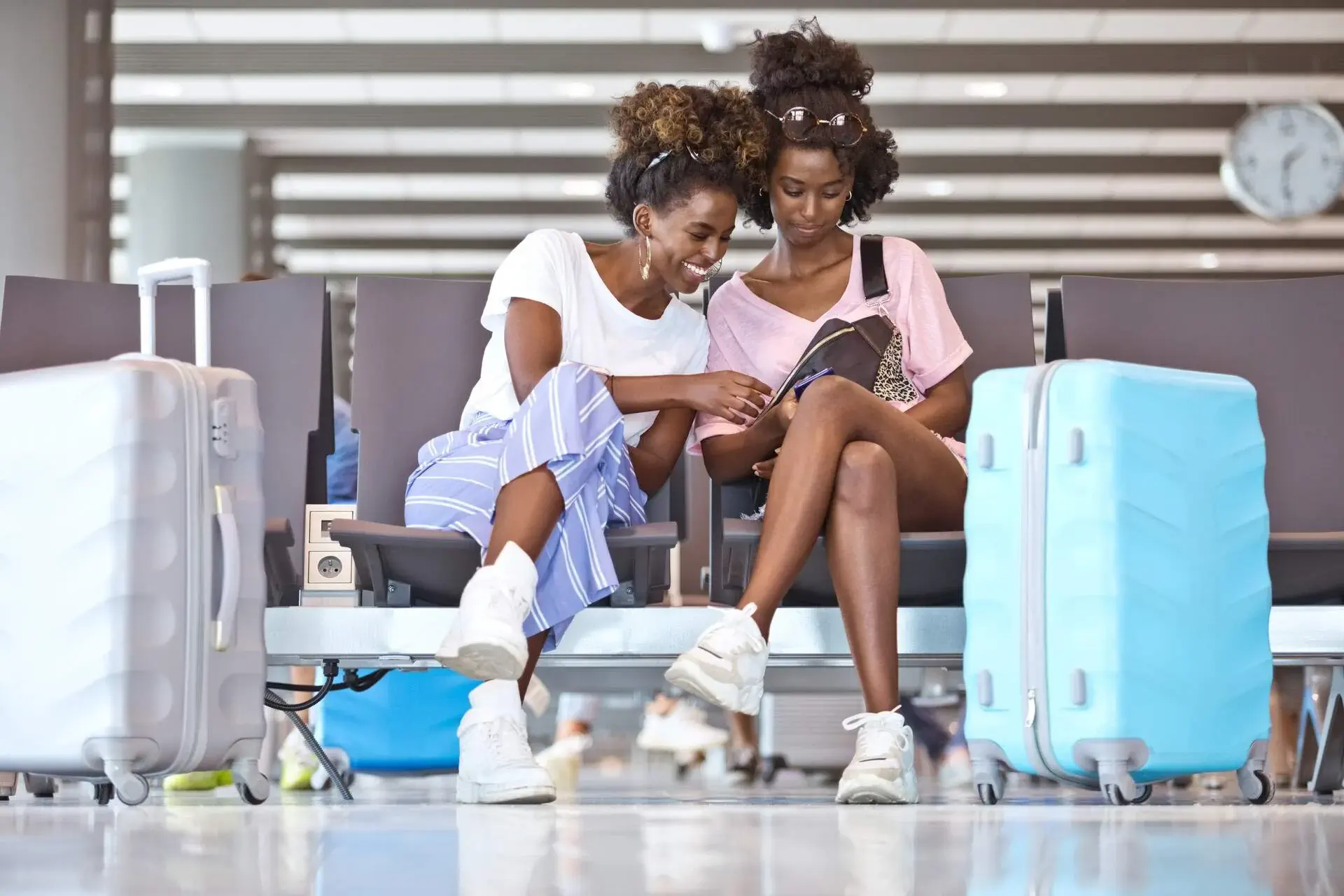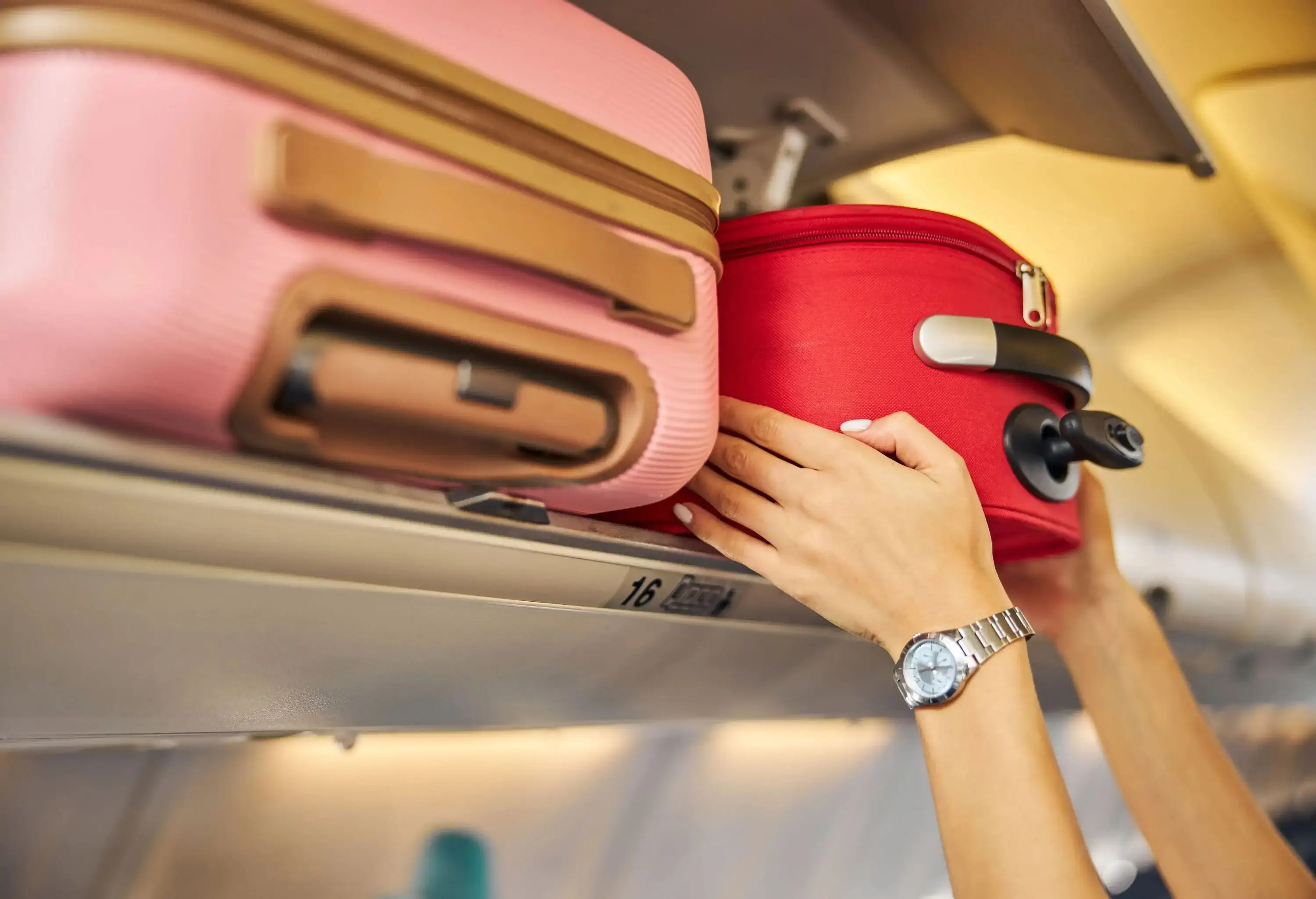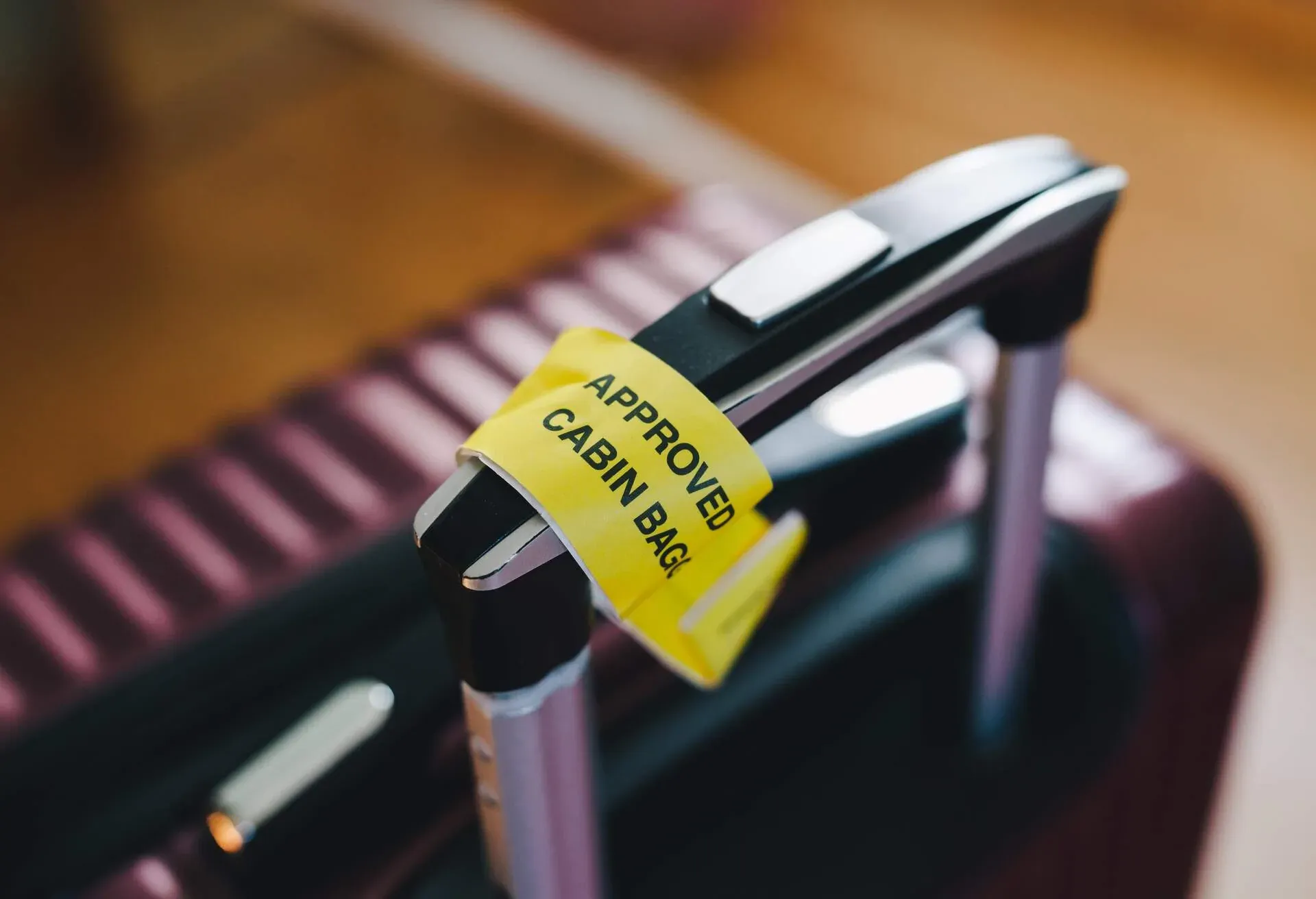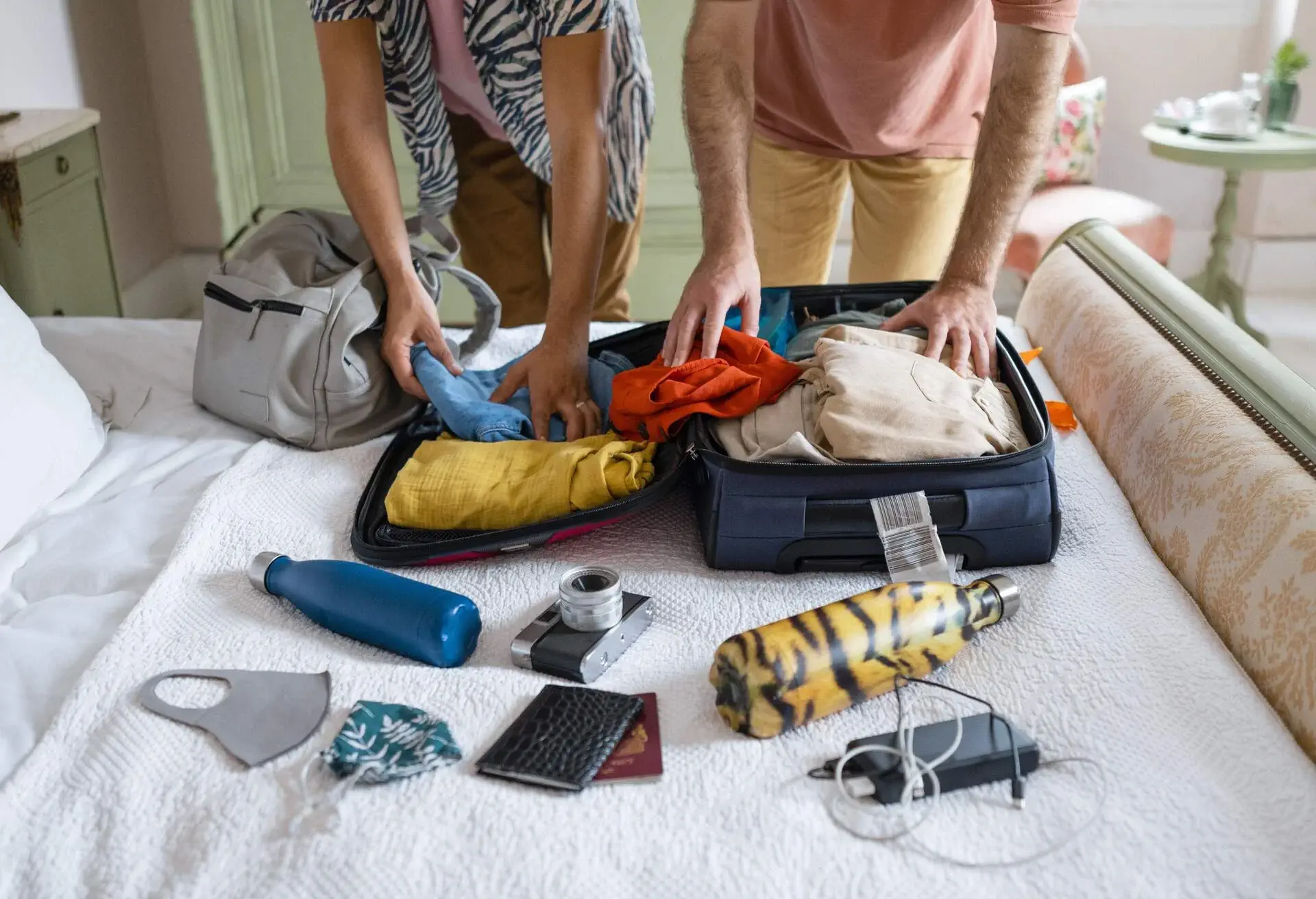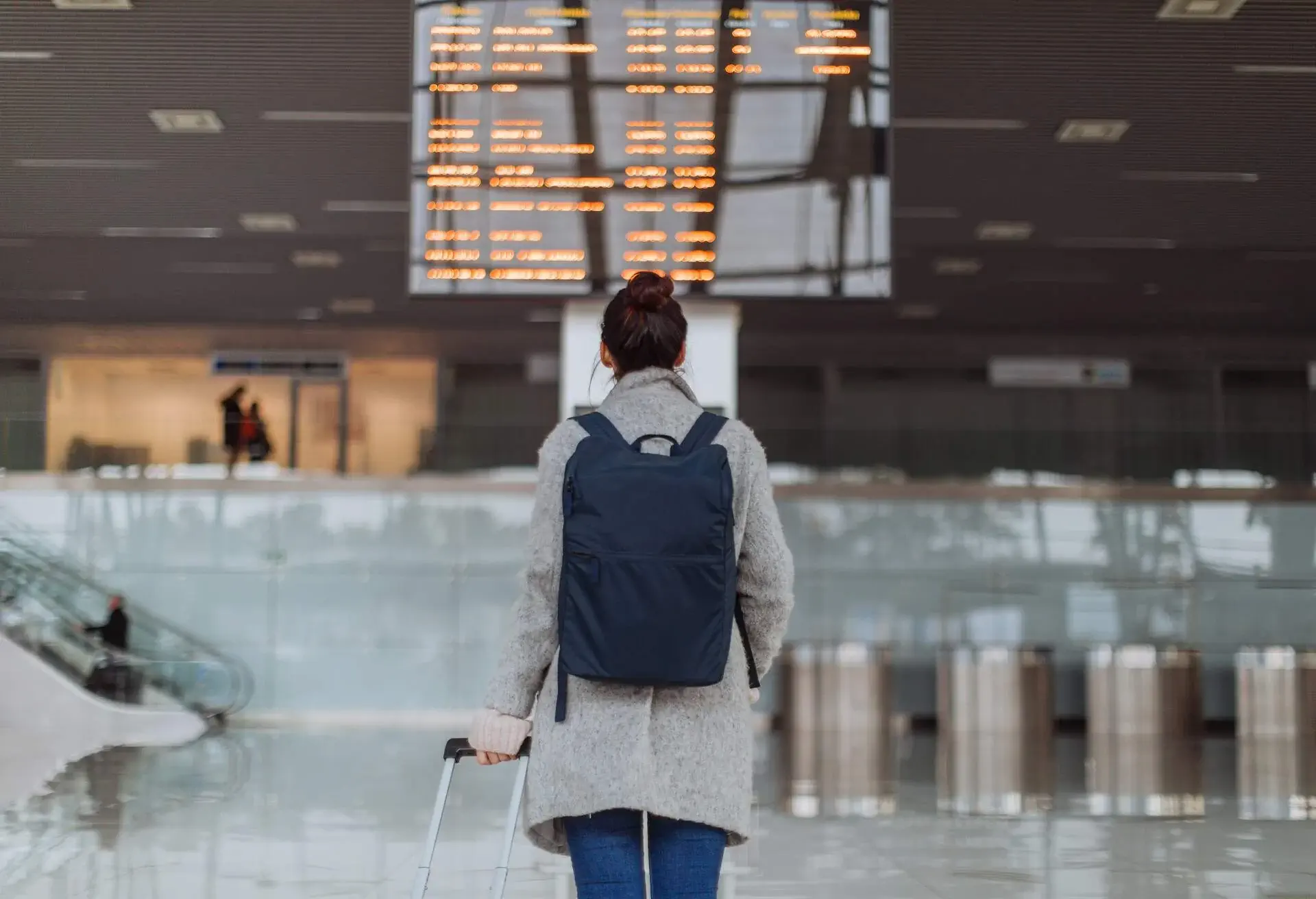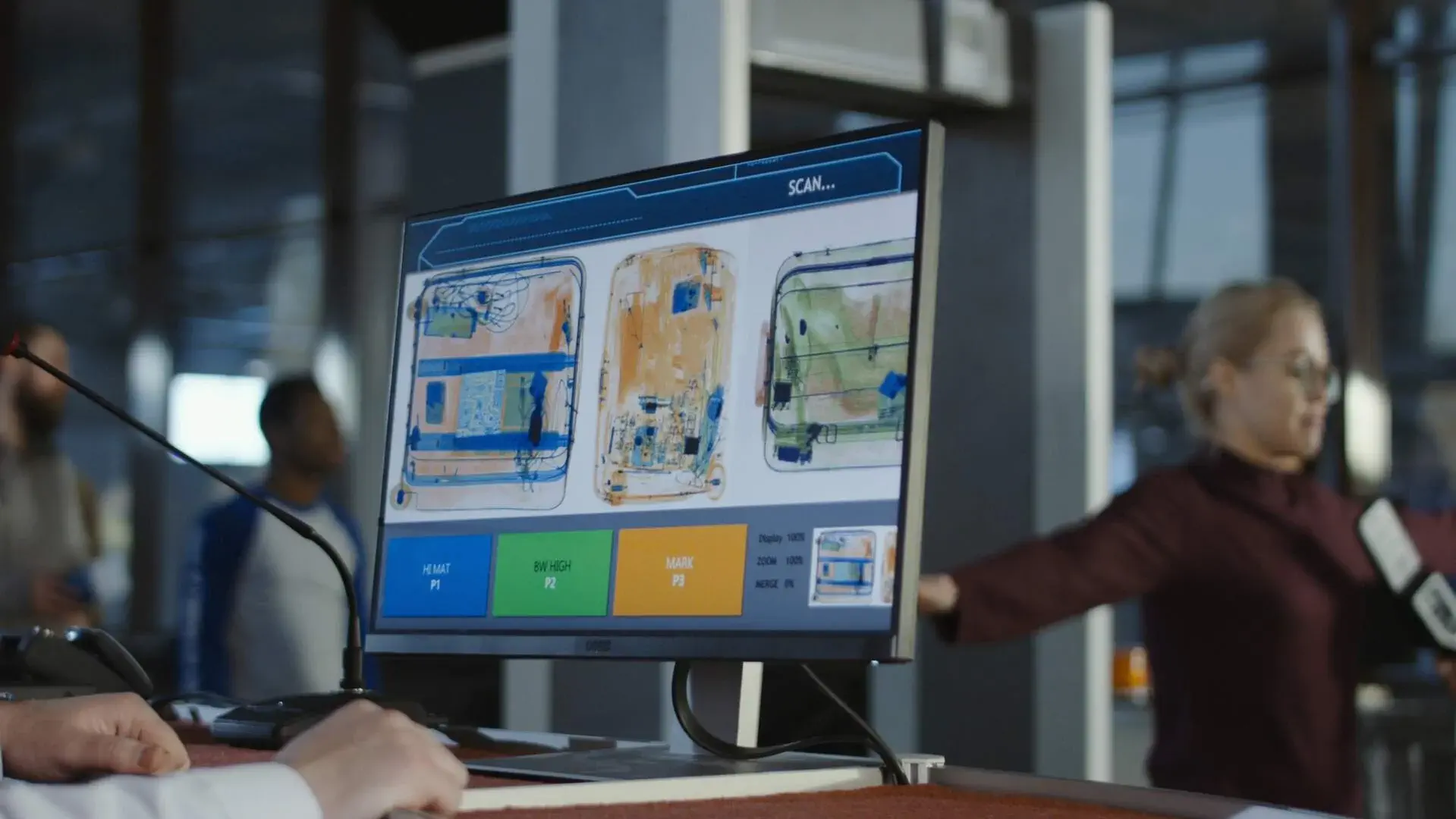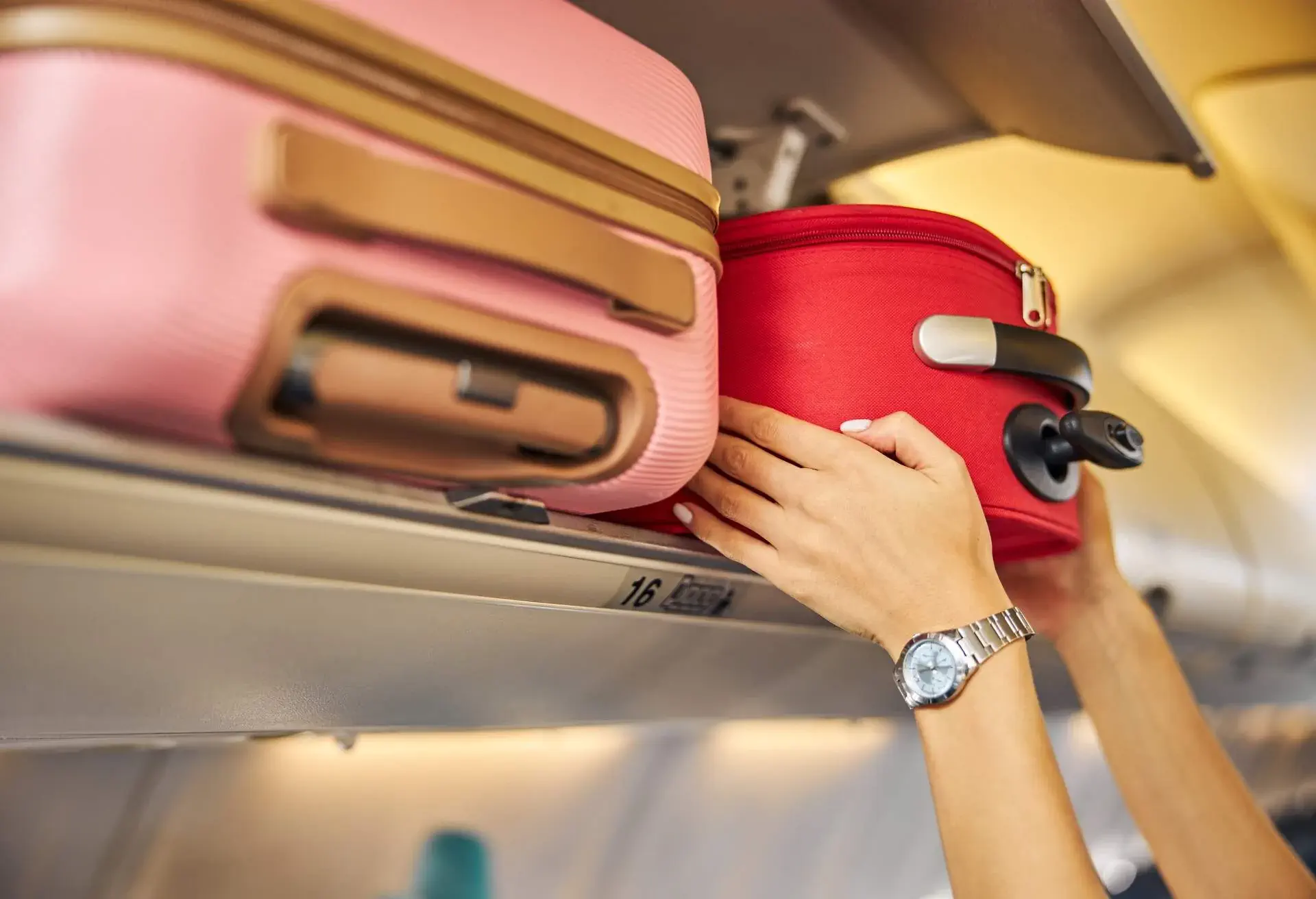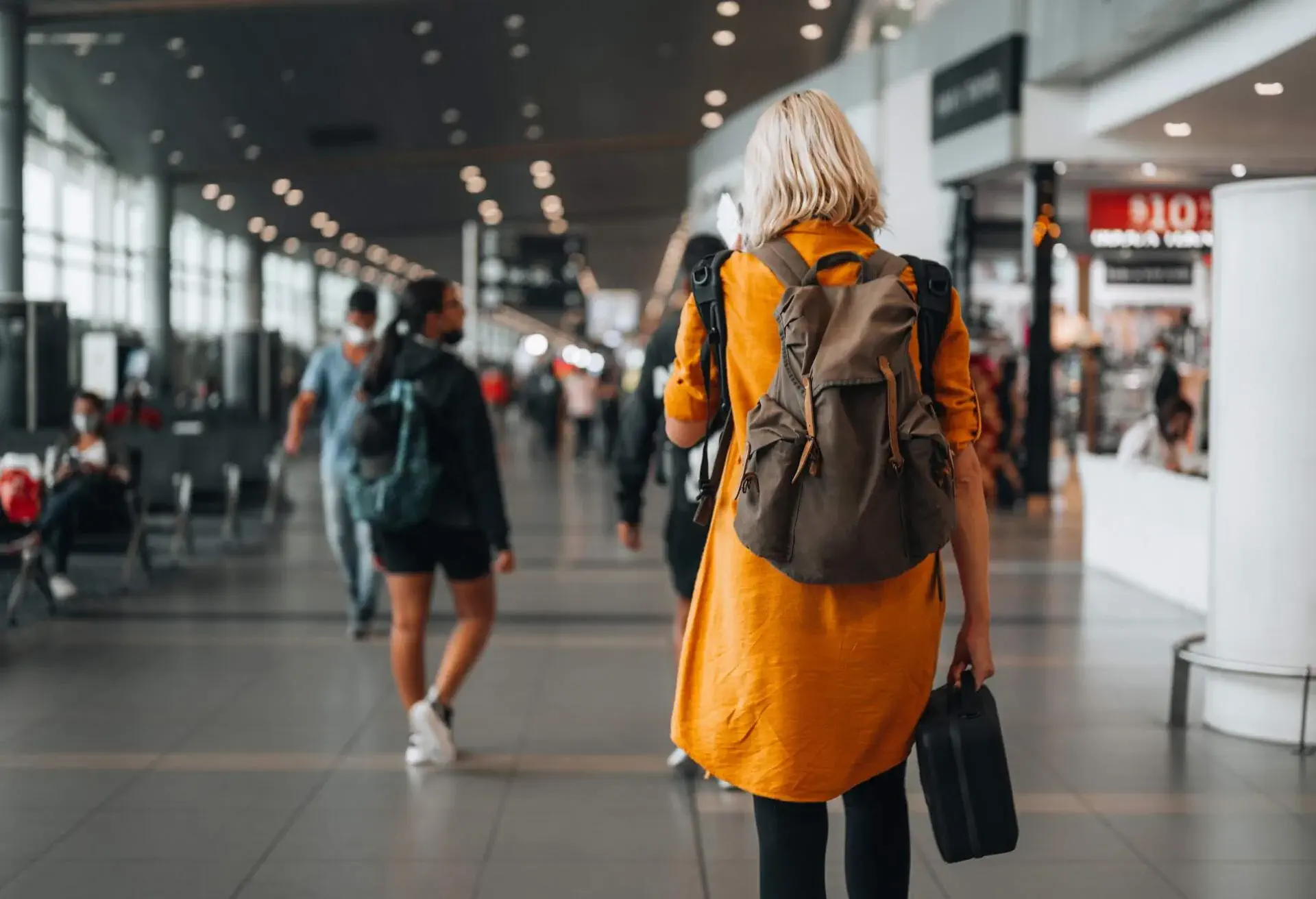Many of us use carry-on bags to avoid paying checked bag fees, prevent our luggage from getting lost, or simply provide comfort and entertainment onboard. But remember, there are specific rules for what is not allowed on a plane carry-on luggage. Read on to discover exactly what is not allowed on a plane carry-on to avoid any unnecessary stress at security or the boarding gate.
What is not allowed on a plane carry-on: the 10 most asked items
Keep in mind that TSA has the final say on any item. It never pays to argue with agents in the airport. So don’t bring anything questionable unless you’re prepared to forfeit it.
From seemingly obvious items like swords to more questionable implements like scissors, some things are universally banned. Other items face varying restrictions. Here’s what to watch out for.
1. Firearms
Perhaps the most widely understood category of prohibited items for carry-on baggage is firearms. The guidelines here are clear: There are no firearms allowed in the plane’s cabin as carry-on items. All guns from BB guns to compressed air guns are similarly prohibited.
Even toy guns — including water guns and Nerf guns — count here. This includes any toy or object that resembles a weapon. Flares, ammunition, and gunpowder are forbidden, too. Only accessories like gun holsters and rifle scopes get the okay from TSA.
2. Flammables
Flammables may sound as obviously prohibited as firearms for airplane carry-on. But they’re actually not so cut and dry. Flammable liquids like butane, chlorine, and gasoline are banned onboard (and in checked luggage). The same goes for fireworks and explosive toys like bang snaps and blasting caps.
However, some lighters are allowed, along with cigarettes and cigars. But you’re forbidden to smoke them anywhere on the plane.
Falling into this category, you can bring dry batteries in a carry-on with no quantity limits. However, their terminals (the ends of the battery) must not come into contact with any other metals.
3. Medical supplies
At the opposite end of the spectrum, medical supplies are almost universally permitted on planes in carry-on bags. This is one of the very few exceptions to the otherwise strict limitations imposed upon liquids.
You can even bring a medically necessary oxygen tank onboard. But as is the case with most medical supplies, you’re expected to remove them from your bag and present them to the TSA agent before the inspection.
You can use most assistive devices like wheelchairs and crutches in the airport. You might need to gate-check them, though. Battery-powered wheelchairs and mobility devices are the only medical items specifically prohibited by the TSA, but you can check them.
4. Sports gear
You can bring a great deal of common sporting gear in your carry-on, but not all. You may actually be surprised to learn that semi-sharp items like horse spurs and clamp-ons are generally allowed. A rule of thumb to follow is that anything shaped like a weapon (mainly a club) is prohibited.
This includes equipment like baseball and cricket bats, golf clubs, hockey and lacrosse sticks, and even walking sticks.
You probably won’t have much reason to bring a bowling pin onboard with you, but this also falls under the prohibition of sporting equipment that could be used for bludgeoning. You can bring fishing lures onboard unless they contain large hooks.
The TSA agent on duty will determine if your hook is too large. It’s safest to pack these in checked luggage if you don’t want to risk losing it. No martial arts weapons are permitted..
5. Camping gear
Like sporting equipment, you can bring most camping gear in your carry-on, but not all. Sleeping bags, tents, and even tent poles are permitted by the TSA, but keep in mind that many of these may violate your airline’s size and capacity restrictions, so you may be denied boarding with these even if you successfully pass security.
In many cases, you can simply gate-check them in this situation, but airlines aren’t required to offer this service. Tent spikes are not permitted, and neither is bear spray, cast iron cookware, or gas cartridges of any size.
6. Household appliances and gadgets
The vast majority of household appliances will clear TSA security screening, but it’s important to confirm that they fit within your airline’s size restrictions, or you may not be able to board with them. Even blenders are allowed, as long as the blade is removed, as are hangers, bottle openers, and blade-less corkscrews.
As long as you avoid items with parts ruled out by other guidelines, like blades or too much liquid, finding a household appliance that’s forbidden by TSA is actually quite difficult.
7. Tools
While TSA does take the added step of itemizing some specific tools that cannot board planes as carry-on items, like hammers, drills, and nail guns, the ruling on most tools comes down to one very specific guideline. If the tool is under seven inches, it’s permitted unless otherwise prohibited by another regulation unspecific to tools (like blade guidelines).
As an example, a 6-inch screwdriver can come onboard the plane cabin with you, but a 7-inch screwdriver will have to stay in your checked luggage.
8. Sharp objects
TSA states that sharp objects are generally prohibited in carry-on bags, so this is one of those categories that is best understood by exploring the exceptions. Knives (including pocket knives), blades, sabers, saws, and throwing stars are clearly out, but you can bring tweezers, nail clippers, pencil sharpeners, and safety pins.
Knitting and crochet needles are also allowed. Scissors under 4 inches in length from the pivot point are allowed, and so are cigar cutters – though the TSA advises packing these in your checked luggage as the agent on duty may object to them. You can bring a disposable razor if sheathed, but you’ll need to remove the blade on a safety razor to make it through security.
9. Food and beverages
Because all beverages are liquids, they must follow the TSA’s volume rule of being contained in 3.4-ounce (100 mL) containers, all of which must fit in a single quart-size bag. Provided your drinks comply with these volume guidelines, the only beverage forbidden by TSA is alcohol that is 140 proof (70% alcohol) or greater.
Solid foods containing no liquid or cream elements are permitted onboard as carry-on items, but beware of fresh fruits and vegetables, which may be restricted when traveling to and from certain destinations due to the risk of spreading invasive pests. This is especially likely if you’re traveling internationally.
10. A note on alcohol
You may have seen travel hacks about bringing aboard miniature bottles of alcohol, often called airplane bottles, to avoid paying for steeply-priced drinks during your flight. These bottles are typically 1.7 ounces (50 mL) and are allowed through TSA screening as long as they’re properly contained with other liquids. But there’s a catch: You’re not allowed to drink them on the plane.
FAA (Federal Aviation Administration) regulations prohibit drinking alcohol onboard planes unless it’s served by the cabin crew, which means you can’t drink your own booze. Think of it like any other bar — you have to buy it there to drink it there.
Explore the carry-on policies of selected airlines
Make sure to not pack the following items
Even after exhausting the TSA’s list of prohibited items and familiarizing yourself with the general trends, you may still find yourself wondering about some specific items that seem to hover somewhere between prohibited and permitted. While your safest bet is to simply not bring these, here are some examples of items you might have thought you could bring in your carry-on but you definitely cannot:
- peanut butter (it’s not solid),
- a magic 8-ball (it’s filled with liquid),
- strike-anywhere matches (only safety matches are allowed),
- Samsung Galaxy Note 7 phones (it’s permanently banned on planes or in the mail by the Department of Transportation).
The TSA also advises you not to bring canned foods, even if they’re completely solid, as agents may not be able to verify contents without damaging them.
Now that you’ve mastered the regulations when it comes to what is not allowed on a plane carry-on, check out this guide to how to pack a carry-on to ensure smooth travels.
International airport differences

While TSA guidelines are fairly standard and uniformly enforced across US airports, other countries have their own governing agencies with regulations that may vary. Most often this applies to liquids. Keep in mind that itineraries with international connections may leave you clearing security again at the connecting airport, and your items will be subject to local regulations regardless of the fact that your origin airport allowed them.
Airlines are welcome to create additional restrictions that don’t violate government regulations and, while this isn’t common in the United States, international airlines may have more unique guidelines. It’s always helpful to check an airline’s specific carry-on guidance before packing.
For example, scissors with blades under 4 inches are allowed on US airlines, but are prohibited by Turkish Airlines. As most security screenings are unconcerned with which airline you’re flying, it’s unlikely that these items will be targeted before boarding, but you may suffer repercussions if spotted with them onboard.
International customs differences
While this is not specific to carry-on luggage, it’s also important to remember that some countries completely ban specific items that are commonly used in the United States. While you may have no trouble getting these through TSA screening on your way to the destination, you’ll be violating local laws if you bring them into the host country and may be prosecuted if caught.
Prescription medications are a common example of these, so always check the customs website of your destination before packing.
What is not allowed on a plane carry-on FAQs
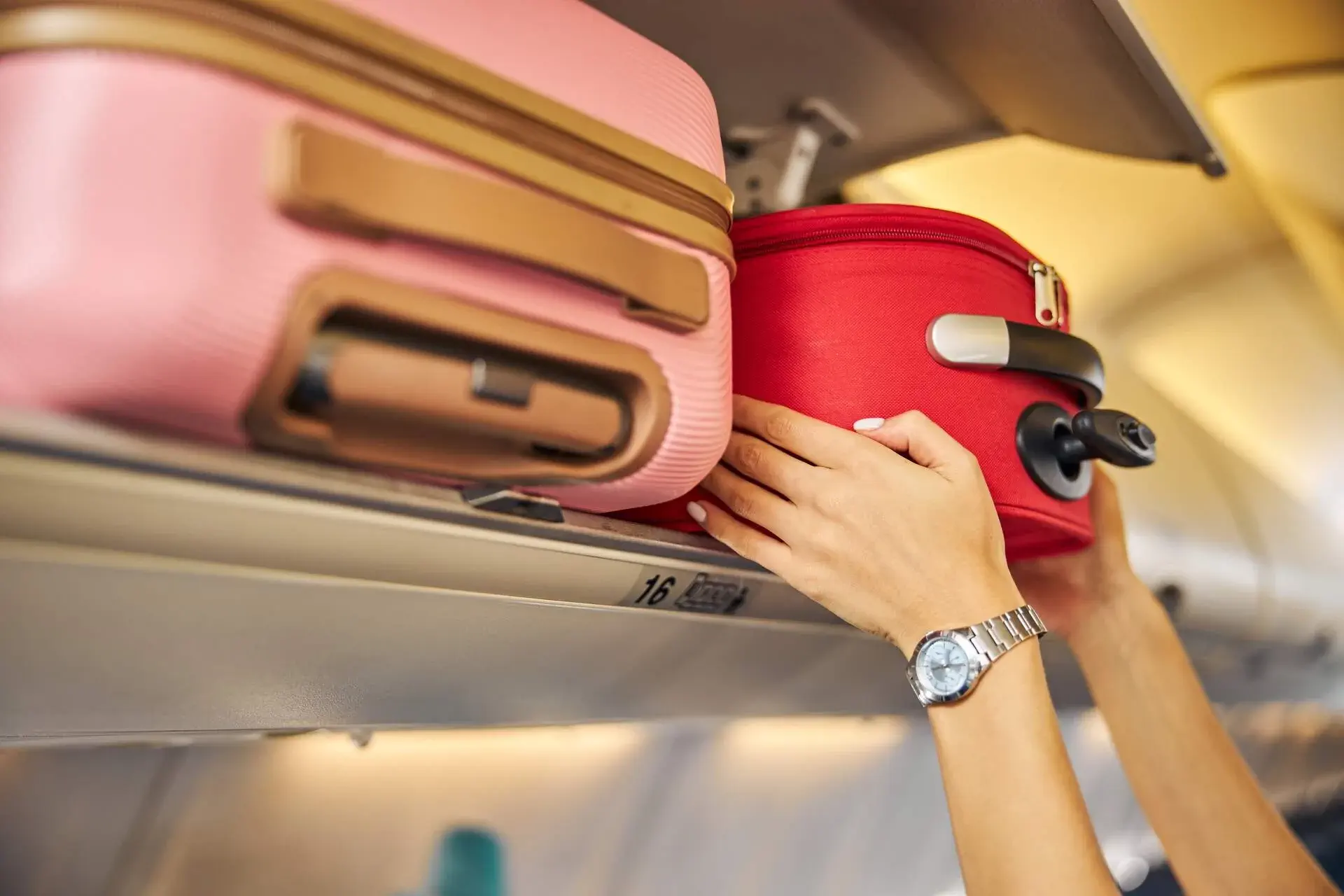
Yes, you may bring glass containers onboard with you. The key here is that anything inside the containers themselves must comply with TSA’s liquid rules. This means the glass containers must hold no more than 3 oz (100 ml) of liquid.
This will vary depending on the airline and country. Using TSA guidelines as a general rule, personal hygiene items that comply with the previously stated liquid restrictions and do not resemble weapons are generally allowed. Note that electric and sheathed disposable razors are allowed, but other kinds of shaving razors are not. Tweezers and nail-clippers are usually fine to bring onboard as well.
This guide is a great start, but if you want to be absolutely certain, you should check the individual guidelines of the airline you’re flying with. It’s also wise to check the official TSA website or other relevant international travel regulations directly if you’re still unsure.
Is carry-on guaranteed for everyone?
In short — not necessarily. While most major airlines and fares include some amount of complimentary carry-on. But some budget airlines and deeply discounted tickets do not.
To be sure you won’t be met with any surprises, use KAYAK’s Fee Assistant. You can select the number of carry-on and checked bags needed so these costs are automatically included in your search results. It’s located at the top of the flight results page, and you can adjust the filters on the left after you search.
How does the airline know what’s in my carry-on?
TSA (Transportation Security Administration), or another country’s equivalent, will screen your carry-on (and you). They’ll do this as you pass through airport security to check for prohibited items. The process may require more or less effort and time depending on things like airline status and membership in expedited screening programs like TSA PreCheck and CLEAR. But everyone will pass through this screening, and nearly must adhere to the same restrictions.
Bags get reviewed by an X-ray scanner and may be flagged for an extra search by hand by TSA agents. Violations can result in steep fines and potential legal issues. So don’t try to sneak anything though!
Streamline the process
Passing through security screenings can be the most time-consuming and frustrating part of your journey. But there are some simple tips you can keep in mind to get through more quickly. Because TSA has tight regulations on liquids, you might get asked to remove them from your packed bag. And even though more airports now have screening technology that allows you to keep everything inside, avoid extra hassles by keeping them in an easily-accessible location — just in case.
While there’s rarely a limit to how many electronic devices you can bring onboard, TSA often requires that these also be removed from bags for screening. So be prepared to quickly grab those, as well. Even people with TSA PreCheck can typically only leave one large electronic device in each bag.
Finally, keep everything out of your pockets (including phones and wallets). Also remember to remove metal accessories like belts when passing through security.
And be sure to double check you have everything when you finish going through security. Leaving valuables — or even an entire suitcase — behind is far more common than you might think!
With unpredictable wait times at airport security, it’s good to plan ahead when deciding how early you should arrive to the airport. This guide on how early you should arrive to the airport can help you make the call.
Some of our favorite flight routes
- Flights to New York
- Flights to Los Angeles
- Flights to Chicago
- Flights to San Francisco
- Flights to Miami

